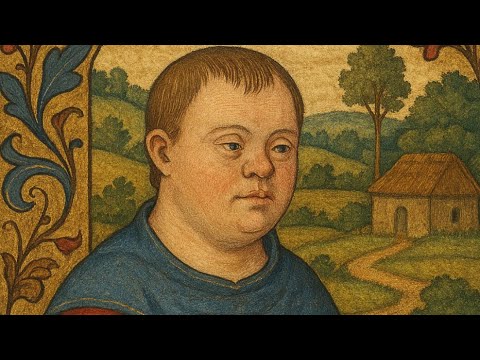The entire story of the European Middle Ages in one short video – from the barbarian invasions to Charlemagne’s empire; from Europe’s fragmentation to its sweeping conquests and crusades; from the devastation of the Black Death to the creativity of the Renaissance.
00:00 Intro
00:19 Romans, Christians, Barbarians
02:43 Germanic Kingdoms
03:53 Heirs of Rome
05:16 Carolingian Empire
06:36 Disintegration
07:59 Rise of Feudalism
09:28 Changing Tides
10:56 Growth
12:27 Expansion
14:15 The Church
15:50 Nobles and Kings
17:42 Black Death
19:41 Warfare and State
21:19 The Way Ahead
Select sources and further reading:
– Judith M. Bennett, Medieval Europe: A Short History
– Barbara H. Rosenwein, A Short History of the Middle Ages
– Robert Bartlett, The making of Europe: conquest, colonization and cultural change, 950-1350
– Marc Bloch, Feudal Society
– [Hebrew:] אביעד קליינברג, קריאת ביניים: מדריך קצר לימי הביניים במערב
Music and sound effects: epidemicsound.com








Fake history. Skipped everything they hated
Thanks for this video.
great video
First of all, I want to congratulate you. Traveling through medieval European history in just 20 minutes is impressive, and you've done it by creating a good map, easy to follow and beautiful to look at.
However, I would like to make a few observations. First of all, please use A.D. for Anno Domini, a Latin phrase meaning "in the year of the Lord." I understand that using C.E. stands for "Common Era" and is an alternative to the traditional "A.D." (Anno Domini) system for dating years, but when talking about history, the correct dating must be used. I fully understand that history is written by the victors, but there are elements that great historians have agreed upon, and states have agreed to include in history books.
Furthermore, having mentioned the Byzantine Empire, it would have been correct to mention the Great Schism of 1054, which separated the Roman Catholic Church from the Orthodox Church, to better help the public understand the role of religion that dominated the lives of individuals and their subjects.
Otherwise, congratulations on including the Hundred Years' War, but when you concluded with 1492 and the discovery of America, it would have been appropriate to also mention the fall of Constantinople in 1453. I understand that you wanted to address medieval European history, but during the video I noticed that you updated the borders of the various empires, including the Ottoman Turks and the Byzantines, and you also mentioned Jerusalem, so mentioning those elements would have been ideal. That said, keep it up, you have my respect. Rating: 9/10.
I wish you all the best and good luck with your future projects.
Why am I watching this when History is the only subject I ain't struggling in 😭
Armenia was the 1st to make Christianity it's national religion, Rome came after. Armenia is European, so why isn't it mentioned? Moreover, Datev Monastery is one of the oldest, if not oldest, university in Europe.
Should change the title to WEST Medieval Europe.
Imagine what humanity could have achieved if the Romans eradicated Christianity…
Are you american by any chance? You have no idea where Bulgaria and Romania are.
Christianity in Albania dates back to the apostolic years, i.e., the first century AD. The Apostle Paul preached Christianity in Illyria during his missionary journeys. Specifically, during his third missionary journey, which began in the spring of 53 and ended in the summer of 56, the Apostle Paul spent two and a half years in Ephesus, from where he was forced to leave after a pagan uprising against him, led by the goldsmith Demetrius. The turmoil in Ephesus forced the Apostle Paul to go to Macedonia and from there to Illyria. This fact is mentioned in the letter to (Romans 15;19). "From Jerusalem to Illyria I have fulfilled the ministry of Christ." (2)
During his journey through Illyria, the Apostle Paul passed through Apollonia. This is confirmed in (Acts 17:1) �and after passing through Amphipolis and Apollonia, they came to Thessalonica, where there was a synagogue of the Jews.�
The Apostle Paul spent a winter in Nicomedia. This is given in the letter sent (Titus 3:12) �When I send Artemas or Tychicus to you, do your best to come to me in Nicomedia, for I have decided to spend the winter there�. Nicomedia was a well-known climatic place on the Gulf of Ambracia, located where today's Preveza is. It was one of the main cities of Epirus and was connected to the Egnatian Way by a branch that passed through Butrint. Surely the Apostle Paul would have had Christian friends in Nicomedia, who would have given him shelter to spend the winter there. (3)
It should be noted that Titus was bishop of Crete. He was called by the Apostle Paul to Nicomedia, the Christians he had created, just as he wrote to Timothy in his second letter. "Do your best to come to me quickly, for Demas, having loved this present world, has deserted me and gone to Thessalonica, Crescens to Galatia, Titus to Dalmatia. Only Luke is with me; take Mark and bring him with you, for he is useful to me for the ministry" (II Tim 4:9-11).